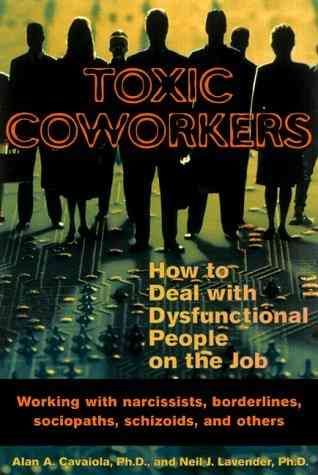Career
How Psychologically Healthy Is Your Workplace?
These 12 key questions will tell you.
Posted November 18, 2013
by Dr. Alan Cavaiola

by Dr. Alan Cavaiola
Every year Fortune magazine in cooperation with CNN Money provides results of a survey, which examines the top list of “best places to work”. In reviewing and evaluating these corporations generally researchers look at not only monetary factors like hiring practices, pay incentives, recognition and benefits programs, but also variables such as camaraderie, faith in managers, . Naturally, the goal of this survey is to gain a sense of overall job satisfaction. However other less tangible variables such as how employees get along with one another are often absent from these studies and understandably so when one considers that an individual may work with someone whom they like and respect (lending to a sense of camaraderie) yet what about those employees who may experienced major conflicts with a boss or other co-workers. When we had written Toxic Coworkers we had first researched over 1,100 individuals working in a variety of workplaces (e.g. public and private corporations, schools, education, civil service government work, hospitals etc.) and found that respondents were more stressed by coworkers, bosses, and supervisees and were not necessarily stressed by things like workload or working conditions which more obviously contribute to workplace stress. What we kept seeing in our research was that employees had people whom they loved working with and looked forward to talking with or sharing stories or jokes with on one hand and then the “toxic coworkers” who seemed to generate stress by way of their attitudes and behaviors. Unfortunately, in writing Toxic Coworkers we didn’t focus as much as what constitutes a healthy, functioning workplace, so I’d like to spend some time talking about what might help to define a healthy and functional workplace.
Buckingham and Coffman (1999) had identified 12 key questions that can help supervisors and counselors discern the overall mental health or functionality of their agency or program by way of employees asking themselves the following (pg 28):
1) Do I know what is expected of me at work?
2) Do I have the materials and equipment to do my work right?
3) At work, do I have the opportunity to do what I do best every day?
4) In the last seven days, have a received recognition or praise for doing good work?
5) Does my supervisor or someone at work, seem to care about me as a person?
6) Is there someone at work who encourages my development?
7) At work, do my opinions seem to count?
8) Does the mission/purpose of my (agency/program) make me feels my job is important?
9) Are my co-workers committed to doing quality work?
10) Do I have a best friend at work?
11) In the last six months, has someone at work talked to me about my progress?
12) This last year, have I had opportunities to learn and grow?
In looking over this list there is a theme that seems to emerge whereby one perceives that they are valued as an individual, that his or her work is valued and validated and that they feel cared about or part of a team perhaps. Probably, if we were to substitute, “healthy family” for “healthy workplace” we’d probably come up with a similar list of questions that would help to define a healthy family, whereby family members feel supported, valued and respected. There are clear lines of communication, family members feel heard, and the structure of the family provides solace. Not bad things right? Buckingham and Coffman make the point that when managers take the time to embody the principles, inherent in these twelve questions there are lower turnover rates, higher productivity and higher job satisfaction. But let’s face it in order to put these implied principles into action, managers and employees must focus on more than just increasing the bottom line.
I recall giving a workshop on Toxic Coworkers and someone attending the program remarked, “but this is work, work isn’t supposed to be fun….you do your job and you get paid but don’t expect warm fuzzies from your boss or coworkers.” The point was well taken, “work is work” and every job has it’s plusses and minuses. The Fortune survey looks at all the advantages of working at a particular corporation and what these companies, seem to have mastered is the balance between encouraging positive work productivity and promoting favorable job satisfaction ratings because people working in these organizations like how they are treated, they feel they are treated fairly, with respect and feel valued. Not coincidentally, when employees and workers are more satisfied, job productivity increases. So, it appears in the long run that it is profitable as well as prudent to pay attention to management practices and paying attention to making the workplace a happier, more functional place.
Buckingham, M., & Coffman, C. (1999). First break all the rules: What the world’s greatest managers do differently. New York: Simon & Schuster.
Dr. Cavaiola is co-author of:



